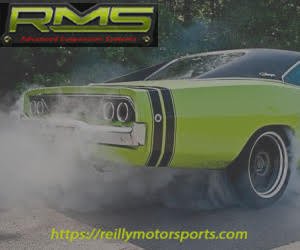
Engine “blueprinting” is a term that’s often thrown around misguidedly in car enthusiast circles, mainly because the depth at which a given machine shop blueprints an engine widely varies. Most just blueprint to the best of their knowledge and equipment, but it takes a true-blue group of Mopar maniacs to properly blueprint the intricacies of a vintage Chrysler engine. Hughes Engines fits the bill and took an in-depth look at one of those intricacies, lifter bore sleeving, in a Tech Center bulletin:
Sleeving lifter bores can be considered part of a complete block blueprinting, although many shops do not suggest or recommend it because they cannot do the work. Generally the only shops that do this job are hardcore race shops or specialized shops. Since we are a specialized Mopar shop we can do both small block and big blocks, including 426 type Hemis.
Sleeving the lifter bores will accomplish 4 things:
- Most importantly, it corrects the alignment and position of each lifter relative to the crankshaft and each other. Photo 1 is a 340 block set up for lifter boring. The boring reamer is supported at both the top and bottom. Note bar going through the cam bores, for maximum rigidity and accuracy. Photo 2 is a photo of a typical lifter bore that has the new corrected bore started. The fresh machined area shown on the top of the lifter bore is biased off to approximately the 2 o’clock and barely cleaning at the 8 o’clock position. This demonstrates how far the lifters can be out of position. This is common. The boring mandrel is supported at both the top and bottom for maximum rigidity, unlike C.N.C. set-ups which don’t support the boring mandrel on the bottom. The sleeves have a .060” wall. This original bore was off almost .060” That’s very bad!
- The factory lifter bores can be out of position from front-to-rear which reduces lifter rotation making flat tappet cam break-in more problematic.
- They can also be out of position circumferentially. This causes the cam timing to be off from cylinder-to-cylinder and valve-to-valve, which reduces power. Or what is really bad is if the bore is not straight. It starts off OK (or way off) and gets worse (or better) the deeper you bore. This makes everything bad. The bores can have one or a combination of all these problems.
- The sleeving will also correct for worn and out-of-round lifter bores! This problem can be especially severe on small blocks because of their 59º lifter angle. The problem is even more common on engines that have run solid roller tappet cams.

Normally bronze sleeves are installed; however in cases where the block needs to “look stock” for some “unknown reason,” cast iron sleeves can be installed. The sleeves can be drilled for oil in situations needing oil to the lifters such as with hydraulic lifters. Iron sleeving includes blending into OEM machining marks so they can’t be noticed!
The answer to how much HP is it worth is answered by; how bad is the present alignment? It would vary depending on the power range you are working in and how bad they are now. In low HP restricted engines where everyone’s power is about equal or you have done everything else possible, sleeving becomes more important.








I am thinking there is a misprint about the first picture being a 440. Is it possible it should read 340? The block is definitely an LA small block.
Yes, it’s a typo. 340 obviously.
wait!! I had an epiphany! You suffer from Rbitis; A fixation on big (and tall) block motors. You are ill, not ill-informed. AMHIK. (fellow sufferer). Seek counseling; might help, couldn’t hurt – except your wallet. My apologies.
David R. Lee
Jeez, two emails and a comment. We get it, you found a typo.
Thank you for the article – it is well-written and easy to understand. I enjoy these and always learn something new.